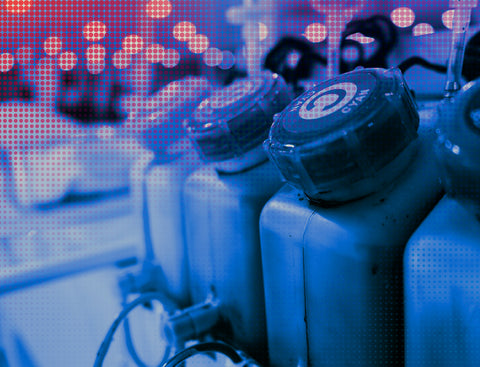Ensuring you have the right type of ink for your DTF printing process is important. It’s what will give you a high quality finish and ensure the durability of your prints last even longer. But it’s not always easy to find what type of ink is the best quality or the right fit for the print method that you're going to use.
Here at DTF Transfers, we’ve put together a detailed guide on what ink is used for DTF printing to help you along the way to create your very own prints.
Table Of Contents -
- Glossary For DTF Inks
- What type of ink is compatible with DTF?
- Can I use regular ink for DTF?
- What is the difference between regular & DTF ink?
- What considerations are there when using DTF ink?
Glossary For DTF Inks
If you’re buying DTF inks for the first time, you may find that there are lots of buzzwords and jargon to navigate through. Here, we’re giving you a glossary to help you along the way.
Viscosity:
The inherent ability of a substance to resist flowing smoothly, characterized by its thickness and internal friction. In simpler terms, it's the measure of how gooey or sticky a liquid is, like honey's resistance to pouring compared to water.
Matte Finish:
A surface texture or appearance that lacks a glossy or shiny sheen, often achieved by using materials with microscopic irregularities that diffuse light instead of reflecting it. Matte finishes are prized for their subtle elegance and reduced glare, making them popular in photography, artwork, and modern design.
Epson:
A prominent multinational corporation renowned for its pioneering contributions in the field of printing technology. Founded in Japan, Epson has excelled in manufacturing printers, projectors, and imaging equipment, garnering a reputation for innovation and high-quality products in the world of digital imaging and printing. Our recommended DTF inks are compatible with Epson-based DTF engines, including the Epson 1L1800, XP600, 4720, i3200, DX5 and DX7.
Hues:
The distinctive and varied shades or colors that make up the spectrum of visible light, each possessing a unique wavelength and perceived quality. Hues are the building blocks of color perception, and they can convey emotions, moods, and aesthetics in art, design, and everyday life.
Print Heads:
Precision components within a printing device responsible for delivering ink or toner onto a printing surface, such as paper or fabric. Print heads are equipped with tiny nozzles that expel ink in controlled patterns, allowing for the creation of text, images, and graphics during the printing process. Their accuracy and performance significantly impact print quality.
What Type Of Ink Is Compatible With DTF Printing?
It is important to remember that not all types of inks are compatible with DTF printing. In fact, this print method requires a special type of ink that contains a high amount of pigment and solvent. It is these factors that will help to produce vivid colors that will last a long period of time.
DTF inks in particular offer a higher amount of pigment than most other inks. This helps the ink to transfer more effectively when heated during the application process. Special DTF inks can offer deep color saturation and smooth viscosity. The best quality DTF inks on the market such as these DTF inks from Ninja Transfers, also offer an expansive color gamut without needing to be concerned about clogged print heads.
Can I Use Regular Ink For DTF?
No, you should make sure that you only use DTF ink when printing. This is because non-DTF inks cannot withstand high temperatures which can cause problems when you’re transferring the transfer onto the garment. Standard types of inks can also not adhere well to the film, which means you may end up with low quality prints which can impact your branding.
What Is The Difference Between Regular Ink & DTF Ink?
The most significant difference between normal printing ink and DTF ink is both their composition and purpose. Printing ink is not designed to be transferred or printed onto films or onto garments. By using regular ink, the chances are the ink will not transfer the design properly and could even result in the ink burning. DTF ink on the other hand has a higher concentration of pigment and solvent which allows more vivid designs to be created and can also withstand the temperatures needed to properly transfer the design.
What Considerations Are There When Using DTF Ink?
The main considerations of using DTF ink is that they should be stored properly to ensure that they don’t dry out. This can help to maintain their quality for a longer period of time. Keep away from direct sunlight and try not to expose the ink to extreme temperatures outside of the transfer process. DTF ink should also only be used in printers that are adept to those types of inks to avoid clogging.
Conclusion
When trying to create high quality, durable designs it’s important to have the right equipment but most importantly, you need to have the right types of inks. This will impact the quality of the designs as well as how well they adhere to the garment.
When you choose good quality DTF inks, you are guaranteed to enjoy vibrant designs that last as long as the garment itself. If you don’t want to print your own DTF transfers, you can order them all ready to press onto your garment. Add your custom design with our transfers by size or gang sheets, or buy some ready to press transfers with pre-made designs. No matter your needs, our experts here at DTF Transfers can help.



